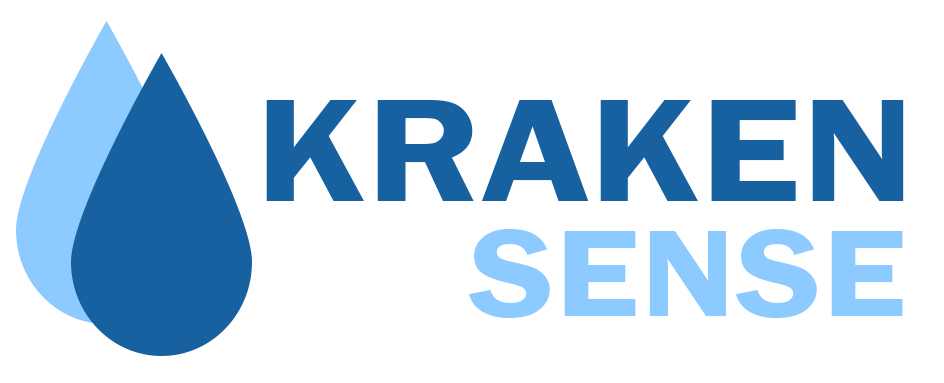Campylobacter jejuni in Pets and Food: A Hidden Threat to Public Health
Every day interactions with our pets and the food we eat can seem harmless, but hidden pathogens like Campylobacter jejuni remind us that microscopic risks are everywhere. Recently spotlighted by public health agencies like the CDC and the Public Health Agency of Canada, Campylobacter jejuni is one of the most common bacterial causes of foodborne illness in North America. Found in everything from raw poultry to your dog’s digestive system, this bacterium can quietly spread through households, leading to a condition known as campylobacteriosis. While most cases are mild, some can result in serious long-term complications.
As our understanding of C. jejuni grows, so does the urgency to prevent it, and that’s where real-time detection technologies like Kraken Sense come in.
What Is Campylobacter jejuni?
Campylobacter jejuni is a spiral-shaped, Gram-negative bacterium that primarily resides in the intestines of poultry, cattle, swine, rodents, wild birds, and yes, even house pets. It’s most commonly transmitted through the consumption of contaminated food or water, but close contact with infected animals (especially puppies and kittens) can also lead to illness.
The CDC has identified the hipO gene as a key marker used to identify C. jejuni strains, helping track outbreaks and trace sources more effectively. A recent focus has been on domestic animals as under-recognized reservoirs, with household pets transmitting the bacteria to humans through fecal contamination or close contact.
How Do People Get Sick?
Humans typically contract C. jejuni by ingesting contaminated food or water, or through contact with infected animals and surfaces. High-risk foods include:
Raw or undercooked meats (especially poultry, beef, pork, and lamb
Raw milk and unpasteurized dairy products
Raw vegetables and shellfish
Untreated drinking water
Because infected animals and humans can carry and shed the bacteria without symptoms, C. jejuni can easily spread through kitchens, pet bedding, and even communal water bowls. Cross-contamination on cutting boards or countertops is another common transmission route.
Symptoms of Campylobacteriosis
Infected individuals may show no symptoms at all, or may suffer from what feels like a severe case of the stomach flu. Symptoms typically develop 2–5 days after exposure and can last up to 10 days. These include:
Diarrhea (watery or bloody)
Abdominal pain and cramping
Fever and chills
Nausea and vomiting
Most people recover without medical treatment, but the illness can be especially severe in young children, the elderly, and immunocompromised individuals. In rare cases, long-term complications can occur:
Guillain-Barré Syndrome – an autoimmune condition causing muscle weakness or paralysis
Reactive Arthritis / Reiter’s Syndrome – joint inflammation following infection
Septicemia – bloodstream infection
Chronic colitis or gall bladder inflammation
Meningitis – inflammation of the brain or spinal cord
Treatment Options
Most mild cases of Campylobacteriosis resolve without antibiotics. Supportive care, hydration, rest, and symptom management are usually sufficient. However, severe cases may require medical intervention:
Antibiotics (like azithromycin or ciprofloxacin) may be prescribed for high-risk patients
Hospitalization in cases involving dehydration, sepsis, or neurologic symptoms
Follow-up care for long-term complications like Guillain-Barré or colitis
Prevention remains the best defense, especially in high-risk environments like hospitals, veterinary clinics, and food processing facilities.
How Kraken Sense Can Help
Detecting C. jejuni early is critical, especially in environments where waterborne or surface contamination poses a high risk. Kraken Sense’s real-time pathogen detection platform provides a proactive solution for stopping outbreaks before they start.
Real-Time Detection, Real-Time Action
Kraken Sense’s qPCR-based system detects specific genetic markers—like the hipO gene—of Campylobacter jejuni directly from water and surface samples. With results in under 60 minutes, facilities can identify threats instantly, reducing exposure risks and guiding immediate response.
Protecting Healthcare and Veterinary Facilities
Hospitals and clinics face unique challenges when it comes to water safety and infection control. Kraken Sense enables:
Continuous sampling from sinks, showers, and water tanks
Automated alerts when pathogens like C. jejuni are detected
Remote monitoring through a secure dashboard for rapid decision-making
Compliance with infection control guidelines and health regulations
Preventing Pet-to-Human Transmission
In veterinary settings, Kraken Sense can be used to monitor water bowls, surgical rinses, and grooming stations where cross-contamination may occur. By catching the presence of C. jejuni early, clinics can avoid spreading infection to pet owners and staff.
Looking Ahead: A Smarter Approach to Pathogen Surveillance
The rise in C. jejuni infections linked to household pets and food underscores a growing need for smarter, faster pathogen detection. Traditional testing is often too slow, allowing infections to spread before anyone knows there’s a problem.
Kraken Sense changes that equation, giving food producers, hospitals, and animal care facilities the tools they need to identify contamination early, act immediately, and prevent widespread illness.
Conclusion
Campylobacter jejuni may be common, but it doesn’t have to be dangerous. With real-time monitoring and intelligent detection, Kraken Sense helps close the gap between exposure and response. As awareness of this stealthy pathogen grows, technologies like Kraken Sense will play a central role in protecting people, pets, and public health.
